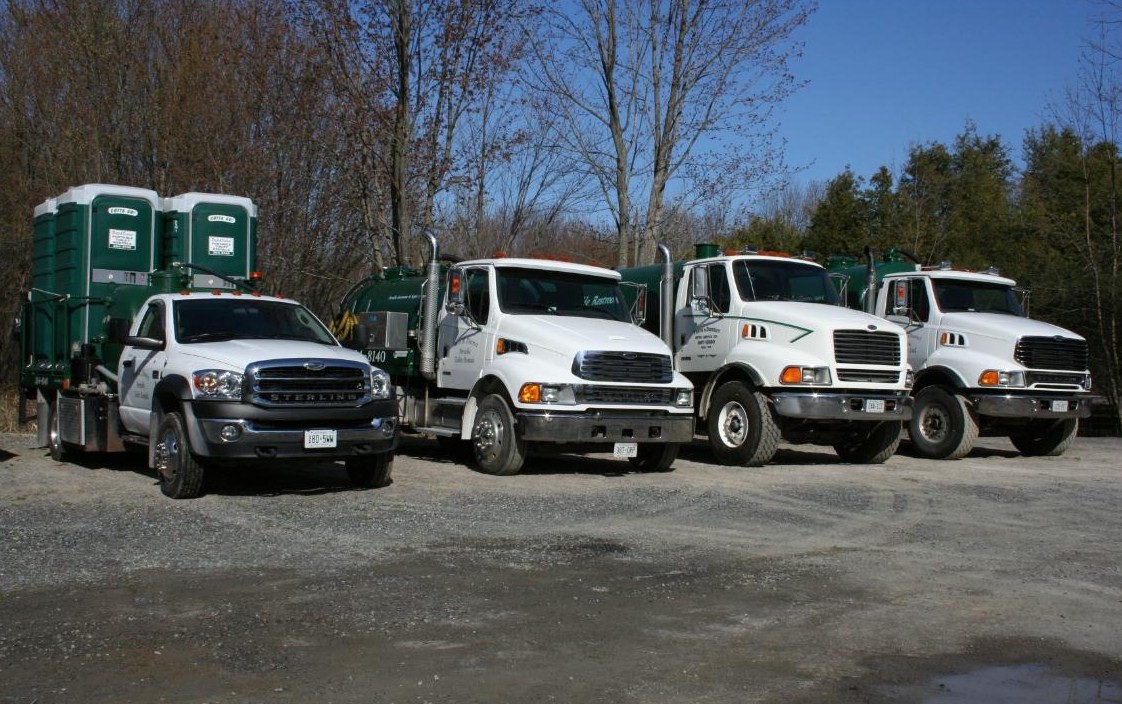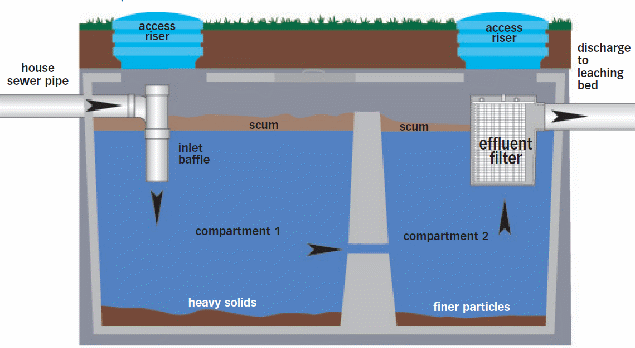
WE PUMP HOLDING TANKS AND SEPTIC TANKS

Booking a Septic Pumping:
Before you make an appointment make sure that all of the septic lids are exposed by having the earth removed from around them. Most septic systems have two lids (concrete and plastic tanks).
Please specify if you are selling or buying a home and would like a Visual Inspection.
Have directions to your location for our drivers.
Ensure the road and area to access the tank is clear of overhang and ground is firm.
Payment is required upon service.
Book appointment by telephone: (613) 267-3350.
What is a Visual Inspection?
A Visual Inspection is also known as a Pumper Report. The Pumper Report includes the following information: condition of the septic tank before and after pumping, construction materials, type of tank, capacity, depth of tank, type of absorption system, condition of lids, evidence of water leakage, and any evidence of sewage seeping from the tank or lids
Condition of inlet and outlet baffles
Flow test to ensure the weeping bed is working
We offer this service from years of experience pumping septic and holding tanks
A Visual Inspection can only be completed at the time of pump out
It is ideal to get a Visual Inspection done when selling or buying a home
Helpful Hints:
Septic tanks should be pumped every 2 to 3 years and cottage septic tanks every 5 years
When purchasing a new home it is ideal to have a visual inspection done at the time of pump out
Use phosphate-free soaps and detergents
Use vinegar to clean the toilet, hydrogen peroxide as a bleach alternative, and use 1-ply toilet paper
Use low-flow shower heads and toilets
Don't direct excess water into your septic
Backwash water softener and sump pump discharge should all go into leaching pits
Keep the leaching bed area grassed and free of trees, vehicles, asphalt, brick, patio stones, automatic lawn sprinklers, swimming pools, and regular foot traffic
Download our Helpful Hints for additional information on maintaining your septic system.
Understing Your Home's Septic System is a booklet of information provided by the Ontario Ministry of Environment that contains information about how a septic system works and how to maintain your septic system available at www.omafra.gov.on.ca/english/environment/facts/sep_smart.htm
Below is a diagram of a septic system. The septic has two compartments: one for solids where the inlet baffle is and the second for liquids where the outlet baffle leads to the leaching bed. The first compartment holds heavy solids while the second compartment holds finer sediment. The effluent filter located in the outlet baffle prevents solids flowing into the leaching bed. The leaching bed will then siphon the liquid before it returns to the soil.

Please visit our Risers & Filters page for information on septic risers and effluent filters.